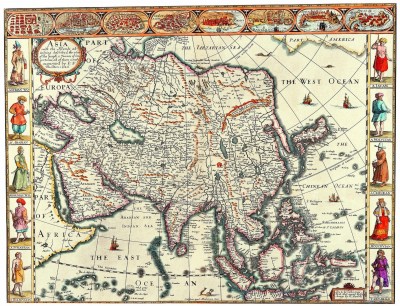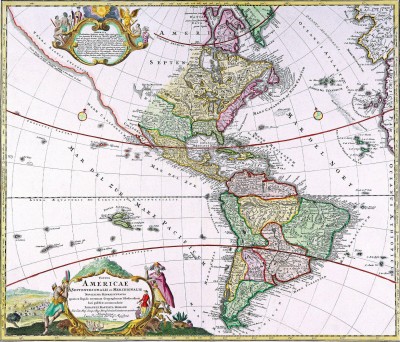Asia with the Islands adioyning described, the atire of the people, & Townes of importance, all of them newly augmented . . . 1626
Map Maker: John Speed Place
Date: London / 1676
Coloring: Hand Colored Size: 20 x 15 inches Condition: VG
Description:
Striking example of Speed’s map of Asia, decorated with 10 costumed figures and 8 town plans of important early Asian cities (Candy, Goa, Damascus, Jerusalem, Orumus, Bantam, Aden and Macao). Korea is shown as a slender oddly projected Peninsula.
The Great Wall of China is shown, along with and Elephant above the source of the Ganges. A nice simple/naïve Northeast passage is shown, along with a piece of North America and sea monsters in the extreme North Pacific and Southern Indian Sea. The text on the verso presents a fascinating Anglocentric view of Asia in the early 17th Century.


